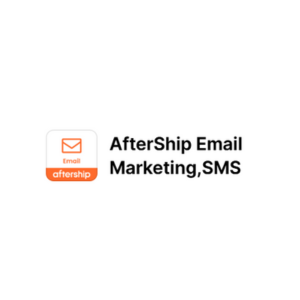
Wishpond
A marketing tool suite that specializes in building lead collection campaigns, optimizing them for virality, and tracking results
Customers
Founded
Company Size
App Installs
App Reviews
Average Rating
What is {listing}?
Wishpond is a marketing tool suite that specializes in building lead collection campaigns, optimizing them for virality, and track results. They offer a variety of templated campaigns to make it as easy as possible for you to get started including Refer a Friend, Sweepstakes, Contests, etc. And the best part is that they take successful campaigns developed by their customers and create templates so other customers can replicate that success.
There are 3 main components of the Wishpond platform:
- Campaigns
- Leads
- Email Automation
The campaigns consist of templated and custom built landing pages, pop-ups, emails, etc. for you to try with your audience. All leads are then tracked within the Leads section from when they first are put in touch with you through all subsequent campaigns. You can then create Email Automations for different workflows to help nurture your leads. From cart abandonment to drip campaigns, or creating a campaign based on tags (Example: entered X contest, converted, female), you have the opportunity to move your customers down your sales funnel. Wishpond is like a mini CRM - allowing you to track customers and utilize that data to improve conversions.
Wishpond makes creating and launching campaigns incredibly simple through their drag and drop template builder. It is a very "what you see is what you get" kind of editor, meaning what you see on the backend is how it will appear to customers on the front end. All templates are easily editable allowing you to change text, add or remove different fields, easily replace images, videos, buttons, etc.
What makes {listing} different than competitors?
The standout feature for this tool is the one click publish button. Once you have created your campaign, just click publish and it will go live. This option is available because Wishpond will subdomain your campaign, so you don't have to figure out how to create a landing page off of your site or pay a separate landing page builder. If you would prefer to publish off of your own domain, they have multiple options for taking what you have created through their platform and putting it on/within your own tools. Easy, easy, easy!
Another cool feature is their ability to "auto-submit". Let's say you run a contest and you send an email out to your database. If you already have that contacts' first name and email, when they click on the contest email it will take them to the entry page, pre-populating that information. Wishpond takes it a step further with "auto-submit" automatically entering the customer into your contest and taking them straight to the post-signup page. So the customer doesn't even have to hit the submit button to enter. Once they click on the email you sent, their information is pre populated in the entry form and they are automatically entered. That is a 100% click to opt-in rate! Amazing!
What metrics is {listing} going to improve for my eCommerce store?
Wishpond improves eCommerce metrics by enhancing conversion rates through optimized landing pages and forms. It boosts lead generation and customer engagement with targeted email and SMS marketing. The platform's AI-driven analytics and automation streamline marketing processes, increase sales, and provide detailed insights for strategic decision-making, making it cost-effective and efficient.
Who has to manage {listing} and how long does it take to setup?
For a platform like Wishpond, you need a dedicated in-house marketer to really get the most out of this tool, whether that is your CMO, head of marketing, or a marketing specialist this is going to require some creative thinking and coordination between multiple channels, maybe ads, and typically partners, so having one dedicated specialist working on this (along with their other marketing activities) is best.
Setup time can be quick for a dedicated landing page, or could take up to a month to launch a contest or cross-promotional campaign alongside a list of partners. Usually you check in once or twice a week on your campaigns to see how they are doing, email the list, nurture, etc. Once a campaign is over, you're usually going to start preparing the next one in an ongoing cycle of promotion.
Is {listing} right for my store?
Wishpond is a great tool for any small to midsize store. Given that it operates like a mini CRM, it allows you to easily create campaigns, track results and utilize actionable insights to improve conversions. Their team is always available to answer questions and the price point makes it feasible for any company to utilize.
Larger stores might go with more customized platforms or their own in-house solution, however, Wishpond has the capability to create and manage campaigns for up to 1million leads, so it is a good option across the board.
Sustainability status
See {listing} in Action
Features
- Landing Pages
- Marketing Automation
- Pop Ups
{listing} Pricing
$49/Month
- Landing Pages
- Pop-Ups
- Marketing Automation
$99/Month
- Everything on the BASIC plan
- A/B Testing
- 2,500 Leads
$199/Month
- Everything on the PRO plan
- 10,000 Leads
- First-in-line Customer Support
- Free Implementation Coaching
We do our best to keep pricing information up to date, but please do check the software partner's own website for the most up to date pricing information.
{listing} Alternatives

Boost sales and grow your email list with powerful popups, targeted emails, and seamless automations—all in one easy-to-use platform.

An eCommerce email marketing platform that automates newsletters and behavior-based flows (welcome, abandoned cart, back-in-stock), integrates with Shopify and WooCommerce, and boosts conversions with popups, segmentation, and analytics.

A Shopify loyalty and rewards platform for eCommerce brands that runs points, referrals, and VIP tiers with flexible rules, omnichannel integrations, and analytics to boost engagement and CLTV.

Email & SMS marketing automation for Shopify that uses popups/forms and ready-made workflows (abandoned cart, welcome, win-back) to grow eCommerce sales with segmentation, A/B testing, and analytics.

An affiliate & referral marketing platform for Shopify that helps eCommerce brands recruit influencers/affiliates, issue trackable links and coupons, set flexible commissions, and automate payouts to grow word-of-mouth sales.

An AI-powered customer engagement platform for eCommerce that consolidates popups, email/SMS, and personalized upsells to capture subscribers, recover carts, and drive repeat sales.

